Do you know what personalized marketing is? You’ve probably seen it before but the fact that most organizations don’t use it to its full capacity makes it extremely important to understand what it is and how to use it correctly. This will help you to stand out from your competitions and to make your customers react.
The marketing ecosystem has drastically changed. It has a lot to do with the fact that all of us, as consumers, leads and users, constantly evolve. This forces technology companies to create marketing tools, methodologies, and strategies that follow the same rhythm or that even go the extra mile by analyzing the needs that specific buyer personas have and presenting the right message at the right time. But not only these marketing tools and paths are forced to evolve. Every organization out there needs to either adjust, go one step ahead or die when trying to engage with consumers.
My favorite part of this change is that it hasn’t finished yet and that it always starts with a name, a person, either face to face or through a device. So, what is personalized marketing? Today I’m going to talk about what personalized marketing is and, more importantly, how you can start using it the right way, based on my experience creating, managing and consulting personalized marketing projects over the last years, especially with multimedia content.
Basic personalization vs buyer persona-based personalization
First, a quick thought.
Most organizations use a basic level of personalization when they create email marketing campaigns. Is that enough? A recent study by Pure360 on why consumers demand that companies go beyond basic personalization shows that it is not.
Did the rules change? No at all. As consumers, we have matured. For example, according to the same study, it is unlikely that 92% of consumers will pay attention to email marketing campaigns sent to them if the personalization is just the name. Of course, each case is different. We all know that it works. But also know that it is not enough.
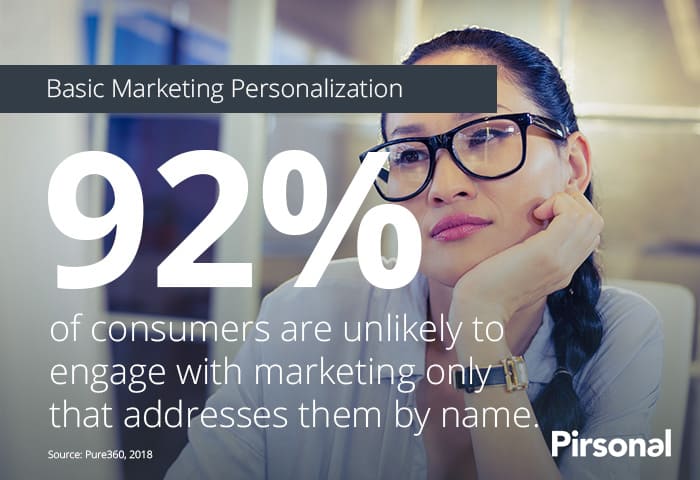
For example, we see that birthday campaigns are less effective than they used to be. This tells us that consumers expect more from us. Today we will also talk about this.
Over the last years as marketers, we have oversimplified the power of personalized marketing. We have taken a look at the data but not really at the people behind every single row. Have you ever thought about this?
If you have, we are aligned. Keep reading because I’m about to share a few tips and important concepts based on my experience working with a couple of big and no-that-known names in the industry. If you haven’t this article will probably improve your approach to marketing personalization.
Before delving into what is personalized marketing, let’s see where all this came from.
Why personalized marketing?
There is something that nobody gets rid of, in addition to spammy marketing emails. We all have preferences. We decide what to read, when and through what device. We also decide what to buy, how much to spend and when to repeat a purchase. In short, we have control over how we interact with a brand or service because we all have a particular context that motivates our buying behavior.
As consumers, there is something else we have control over. We have control over the conversation. We decide if we want to interact with a brand, and with that comes the when and how to respond.
The reality is that we are not all equal, however, when talking about digital marketing, historically we have been treated by brands as equals. This happens in pretty much every industry. Interesting fact: It happens even more in the digital sphere, where we are supposed to have even more information about our prospects, leads, and customer.
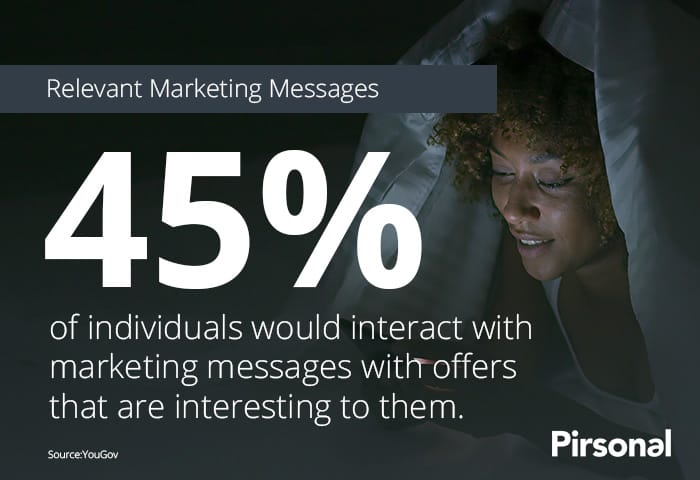
Take as an example the hospitality industry. I guess we all love hotels, don’t we?
It is well known that hotels have been one of the major customer experience experts across for decades. Of course, where most hotels win is in face-to-face interactions. When a guest has already arrived at the hotel. This is actually why many of us pay. On more than one occasion I have heard that story of when a person returned to a hotel and a staff member treated that person by name. It is usually told as a great feat of personalization and customer experience.
But why would marketers talk about this as an isolated event? It is probably more common than we think. It has to do with face to face, with a context that is palpable for the guest. This is what in many cases we have lost as digital consumers and marketers, where more than ever, consumers want to be immersed in their context. Therefore, according to the YouGov study, 45% of consumers would interact with marketing messages whose offers were relevant to each of the recipients.
Just like in any industry, the hospitality industry has its challenges. Through Guest, Pirsonal’s personalized marketing agency focused on hotels, we face them every single day. What’s one of their main challenges? You are right, customer engagement. Too many competitors. Prices wars. Loyalty issues.
Sounds familiar?
You are right again. We are talking about the same challenges industries like banking, automobile, services… are facing.
Back to the hotels’ world, we must take into account that decades ago there were no platforms like Booking.com and, in fact, no online travel agencies (OTAs) with which, seen in a certain way, hotels needed to compete for more direct customers. Basically, hotels had more control over the relationship with their guests.
Coming back to that conversation I was talking about earlier, more questions come to my mind:
What happens before and after a client passes through a hotel, a car dealership, a utility company or a SaaS service?
As we have added tools to our marketing arsenal and, moreover, as we have added data collection, analysis, and its use, we have been cooling that conversation between customers and brands.
It has been told that the order of the factors doesn’t alter the outcome. Well, that doesn’t apply to personalized marketing.
Let’s see why.
GDPR and personalized marketing
The Data Protection Regulation (GDPR) has been one of the most evident marketing evolutions in the last decade. Interestingly, it is not a technological revolution, but rather a conceptual one and, naturally, a legal one. It is also a revolution that has pushed many organizations to invest in new tools, usually CRMs, however, there has been no improvement in the strategy when interacting with prospects, leads, and customers.
For example, many of the hotels we speak with tell us that the GDPR has become a huge challenge for their marketing, especially for their email campaigns. We don’t see this kind of concern in other industries. It makes sense. Having hundreds of thousands of people in a database doesn’t guarantee that they can send email marketing campaigns to prospects, leads, and customers. Added to this, the legal implications are important if the rules are not followed.
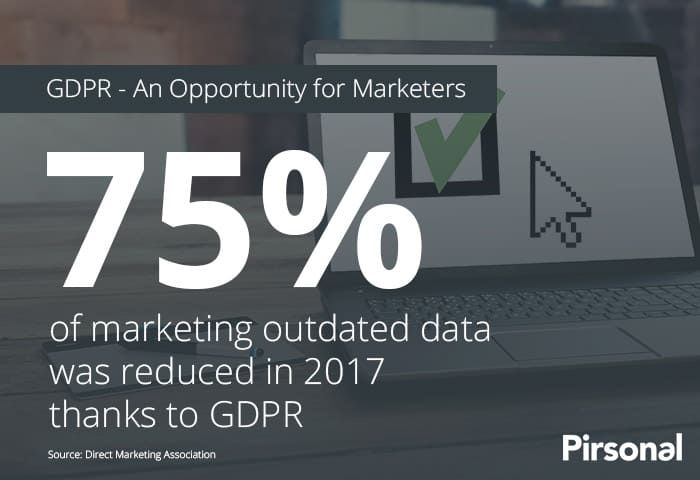
Therefore, we created a very complete report that gives an overview of the challenges and, above all, GDPR opportunities in terms of marketing, especially personalized and individualized marketing. It’s a free report, so download it right here. You will learn what global organizations are doing and the most important things to keep in mind when creating more effective personalized email campaigns.
Conversational marketing and personalized marketing
Cambridge Dictionary describes a conversation as a “talk between two or more people in which thoughts, feelings, and ideas are expressed, questions are asked and answered, or news and information are exchanged”. So for a conversation to occur, we must also have a minimum of context about the person with whom we want to interact. This is the pillar of what is personalized marketing.
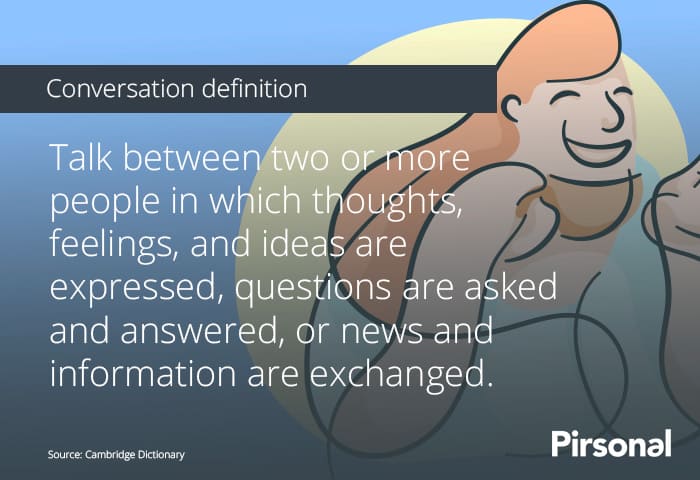
Personalized marketing’s key point is to understand that the consumer is the one who should always initiate the conversation. The brand can “greet” from time to time, to see if the consumer, that person with name and surname, with specific needs, objections and context, interacts with the brand. Hence the need for personalized marketing.
If you think about it, this conversation is one of the reasons why inbound marketing became so popular among both, brands and consumers, and the reason why behind conversational marketing.
Modern marketing should respond to that simple concept: a conversation. If there is no conversation, not only is it illegal from certain types of interactions, such as a mass unsolicited email, but it is also ineffective. No one likes an awkward elevator conversation.
What is personalized marketing?
Personalized marketing, also known as 1-to-1 marketing or individualized marketing (although it is not the same), is a marketing strategy with which organizations can analyze, create and distribute fully customized messages to specific individuals based on their particular needs, context and objections. Modern personalized marketing uses digital technology to create and send personalized messages to current or potential clients.
Thanks to the current state of technology in the collection and processing of data, as well as in communication channels with customers (emails, SMS, WhatsApp, Facebook Ads, etc.), companies can implement personalization strategies to deliver more effective communication with specific individuals in real-time.
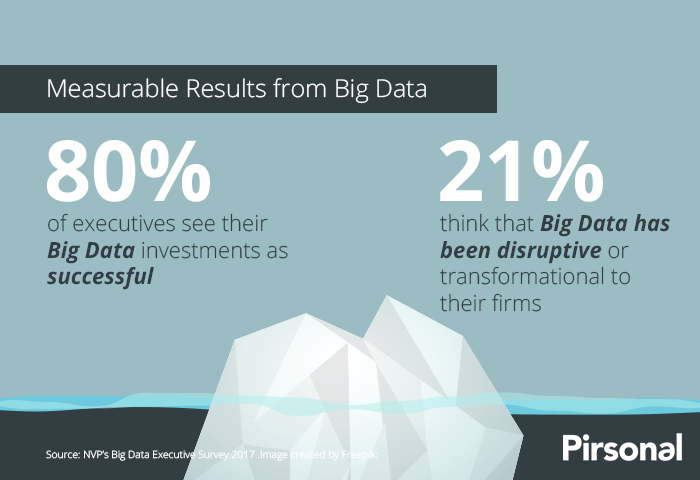
It seems obvious, but it is not. The easiest way to understand personalized marketing is through an example.
Imagine a guy called Kevin Wickham and his wife, let’s say, Karoline. They just made a reservation in Sempris Hotels, where they’ve already been a couple of times. Last time they told the hotel through a quiz that he likes playing golf and that she likes great, fancy food. Some companies will hope that they come back. Other companies will do their best so that they come back. Smarter companies will not only do their best so that they win their business again but also so that they spend more.
How can they do this? To keep it short and sweet, let’s talk about customer experience. One of the key parts of a great customer experience strategy has to do with anticipation. Each touch-point matters and contextualizing what each customer, in this case, “guest”, wants or could desire is crucial to increase the revenue per customer.
How can the hotel get there? According to Revinate, segmented email campaigns drive more revenue per customer (72%). This segmentation begins with the audience, but it must also affect the content.
Let’s see how by understanding the psychology, type of content and steps to create a robust but simple personalized email that converts.
How to create a personalized email
Continuing with Kevin’s example, let’s say he made the reservation, not his wife, which we “know” because of the email used or maybe because he used his loyalty card. What if we connect him with one of his biggest passions, Golf, but also help him to give his wife something special to share during their stay at the hotel. The end goal is to make Kevin react. Reacting translates into buying a golf course package and a discounted fancy and romantic dinner for two. In sales, sometimes you need to be direct but there are times when it is better to help your customer walk through your funnel step by step. In this example, the customers have made their reservation 90 before their arrival.
Taking this into consideration, I put together this quick idea, using a sense of humor, creativity and an appealing call-to-action.
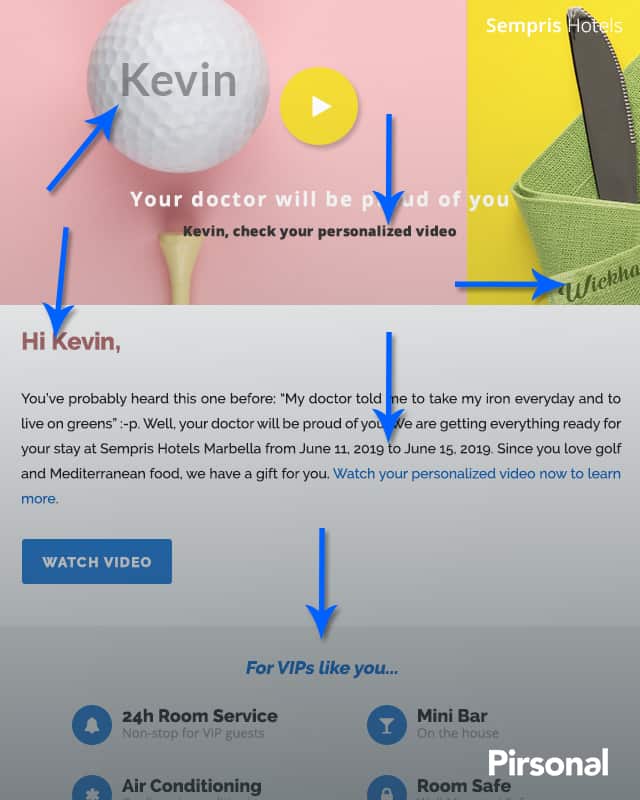
Here you have a video that explains how to create a personalized email that converts:
Thanks to the use of automated marketing tools, the hotel does not create and send these personalized email manually. They can segment the database, and even hyper-segment it, to create completely individualized messages based on all the variables at their disposal, in real-time, and to automatically send the emails through a marketing automation tool.
The alternatives to a basic but effective personalized email like the one in the example are very simple: 1) Do nothing, 2) send a generic campaign for all the people in the database. There could be around a 400% difference in the sales generated. The choice of one path or another will generally depend on your time, expertise and, above all, the type of ROI you are expecting. A study by VB Insight points out that 80% of marketers can not personalize their marketing. Do you know what I see under those this number? A huge opportunity.
One-to-one marketing occurs in a context in which one of the main challenges organizations like yours and mine have is to fight for attention, loyalty, and engagement of each and every client. Losing a customer is usually more expensive than acquiring a new one but you can not stop acquiring new clients. This is the engagement war.
Data sources for personalized marketing
Personalized marketing could depend on several technologies and data sources for the collection, classification, analysis, transfer, and scalability of such data. Nowadays there are countless CRM and marketing automation tools for pretty much any budget, but you can simply start with a spreadsheet before scaling your strategy.
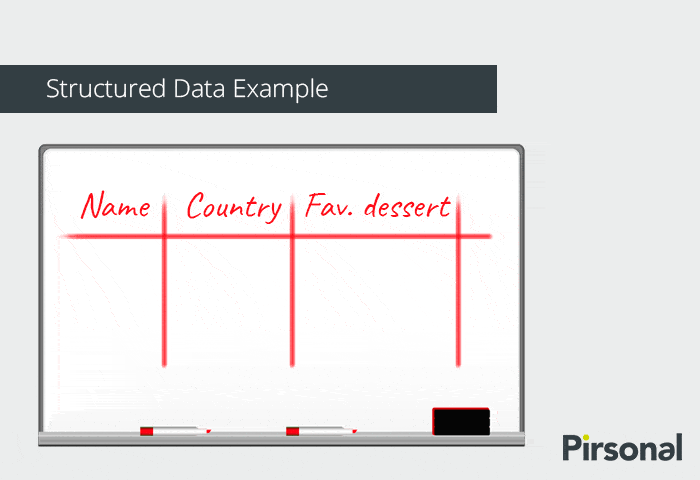
The technology allows hotel marketing and e-commerce professionals to directly collect this information when direct reservations are made through the hotel’s website, the call center or in person. Also when a guest enters through third-party channels (for example, an OTA), since it can be converted into a direct client if it enters our system thanks to some mechanism for capturing leads controlled by the hotel, such as Wi-Fi. of the hotel, a loyalty program or a satisfaction survey.
Types of content that any organization can customize in its marketing
Through personalized marketing strategies, you can customize several types of content, which will be delivered and shown to the end-user at different moments of the customer journey. So far I have already shared some ideas with you. From the most basic and common ones, such as a personalized email or a chatbot response, to a personalized landing page.
But there is much more.
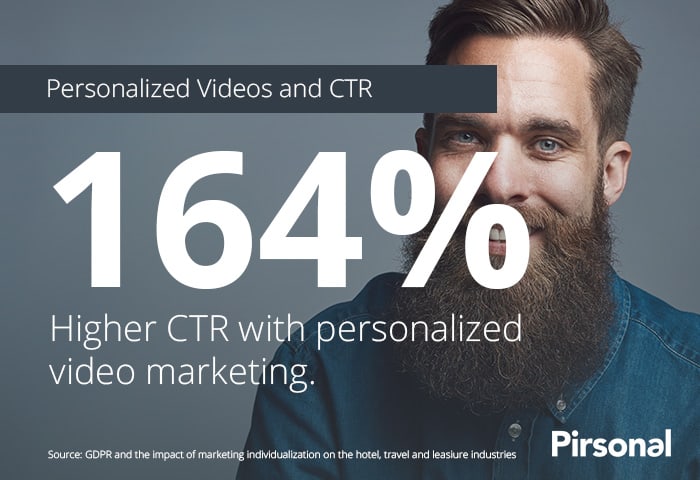
Everything, absolutely everything, can be personalized. What matters is to create a personalized marketing strategy that allows you to connect with your individualized audience and get the results your organization is expecting. These will define the necessary tools and workflows, where a spreadsheet is highly recommended in many cases, at least in the initial phases, but always pointing to the scalability and automation of processes.
Download this checklist to know the baby steps we recommend to create a personalized video strategy, which can also be applied to a general personalized marketing one.
Below, you will see a personalized video demo, sent to a user in order to increase the revenue per customer:
Dynamic videos allow you to perfectly combine texts, images, audios, videos and scenes fully contextualized to each person, with a CTR around 160% higher than a generic video.
Therefore, the most common types of content are:
- Personalized images
- Personalized landing pages
- Personalized videos
- Personalized texts
- Personalized calls-to-action
- Personalized PDFs
- Among others
Common data for personalized marketing
The most common data that brands naturally get through tools such as a marketing automation software, a CRM or an email marketing tool and that can be used for your sales and marketing operations include:
- Name and surname
- Arrival date
- Departure date
- Type of room
- Car model
- Product name
- Number of adults
- Number of children
- Country
- City
- Color
- Loyalty level
- Age
- Income
- …
But is it enough to capture this data? You probably already know the answer. In the vast majority of cases, organizations only use this information for admin porpuses but not really for their marketing, missing a huge customer engagement and revenue opportunity.
The reality is that many organizations, regardless of their size, lack a defined marketing strategy that takes into account all this information to create highly relevant and contextualized messages for each customer. In some cases, it is due to lack of time, in others due to lack of expertise.
When a company manages many data sources and especially important amounts of information, it has the option of incorporating data management platforms (DMP) into its arsenal. These are centralized computer systems for collecting, integrating and managing large amounts of structured and unstructured data from different sources.
Be that as it may, the secret ingredients to start working with personalized marketing in your organization are:
- Deep knowledge of your buyer personas.
- A strategy based on business indicators.
- Information about leads and customers.
- Creativity for the creation of relevant personalized content according to the buyer personas.
- Tools for the creation and monitoring of campaigns and personalized messages.
Remember, the customer has already started the conversation. Use the context information you have to create unique moments in each response you give, to get more direct sales, engagement and to level up the customer experience.

